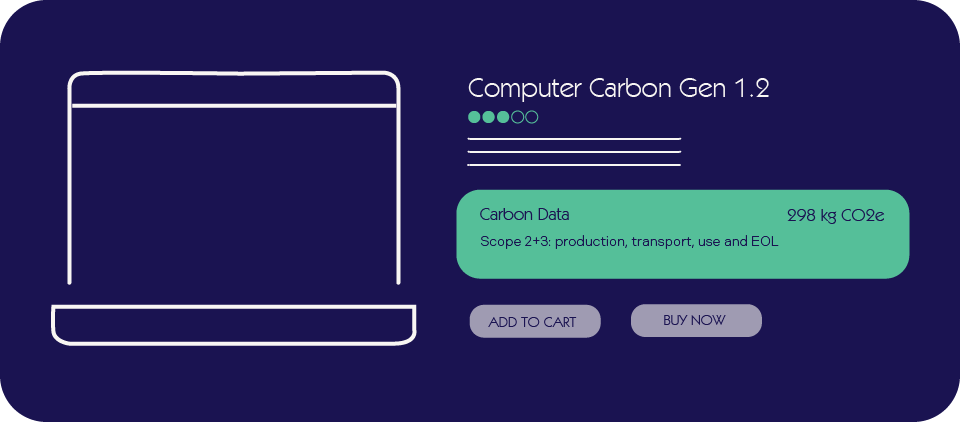e.product delivers carbon data for e-commerce platforms
e.product enables resellers to subscribe to a wide range of product numbers, with Rejoose providing detailed CO2 emissions data for each.

e.product is designed to empower sustainable decision-making during the buying process, revolutionising how businesses and consumers understand the environmental impact of their purchases.
With e.product, you receive country-specific carbon data for each of your products and services. This enables you to support your customers with data that allows them to use carbon emissions as a decision-making parameter.
Data purchased via the e.product API is solely for display purposes and, under no circumstances, may it be used for further calculations, distribution, or resale.
Exceptions to this rule may be offered depending on the type of customer. Relevant information can be found on our Terms & Conditions page.
e.product pricing
|
|
€0.1 per product per year
Starting from €2,000 per year |
|---|---|
|
|
€0.10 |
|
|
€0.09 |
|
|
€0.08 |
|
|
€0.07 |
|
|
€0.06 |
|
|
€0.05 |
|
|
€0.03 |
|
|
€0.02 |
|
|
Call us |
![]()
While e.product is ideal for web shops needing to display a single CO2 value per Manufacturer Part Number (MPN), e.product+ provides more detailed insights for System Integrators by breaking down CO2 emissions across LCA stages like production, transportation, use phase, and end-of-life stages, offering even greater transparency.

A product within e.product and e.product+ is defined as:
Brand + Manufacturer part number (MPN) + Country code.
Definition of a Product Data Set
In the context of e.product and e.product+, one product data set is defined by the unique combination of the following three elements:
◊ Brand: The name of the company or manufacturer that markets the product (e.g., Lenovo, HP, Microsoft, Dell).
◊ Manufacturer Part Number (MPN): The specific product identifier assigned by the manufacturer (e.g., 20YG0033MX).
◊ Country Code: The country for which the carbon footprint is calculated, typically based on the use-phase energy mix (e.g., DK for Denmark, DE for Germany).
Together, these three components form a unique product profile. If any one of the components changes, it is considered a different product data set. This structure ensures that each product's environmental impact is assessed accurately, accounting for both product specifications and regional differences in energy consumption.